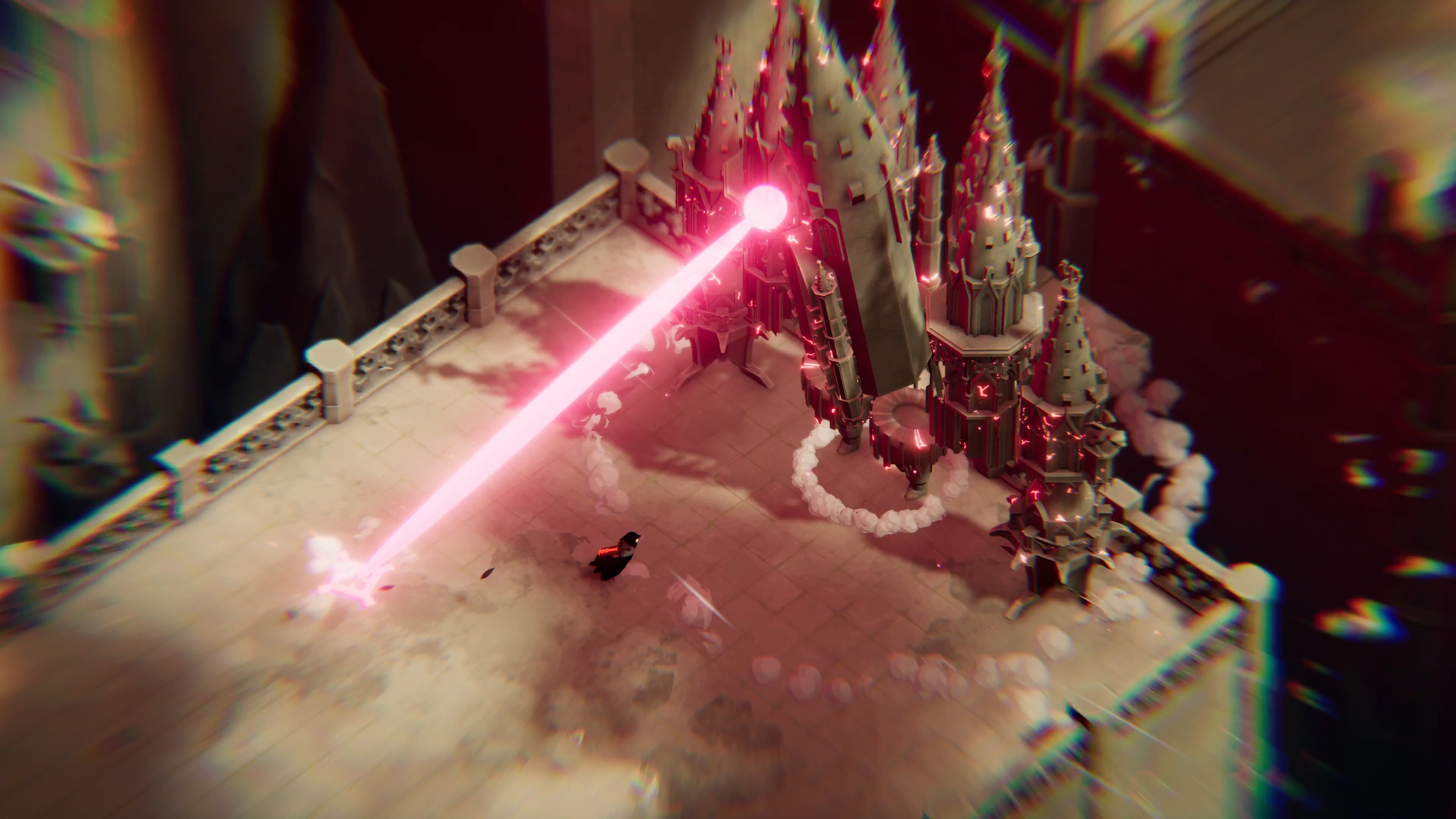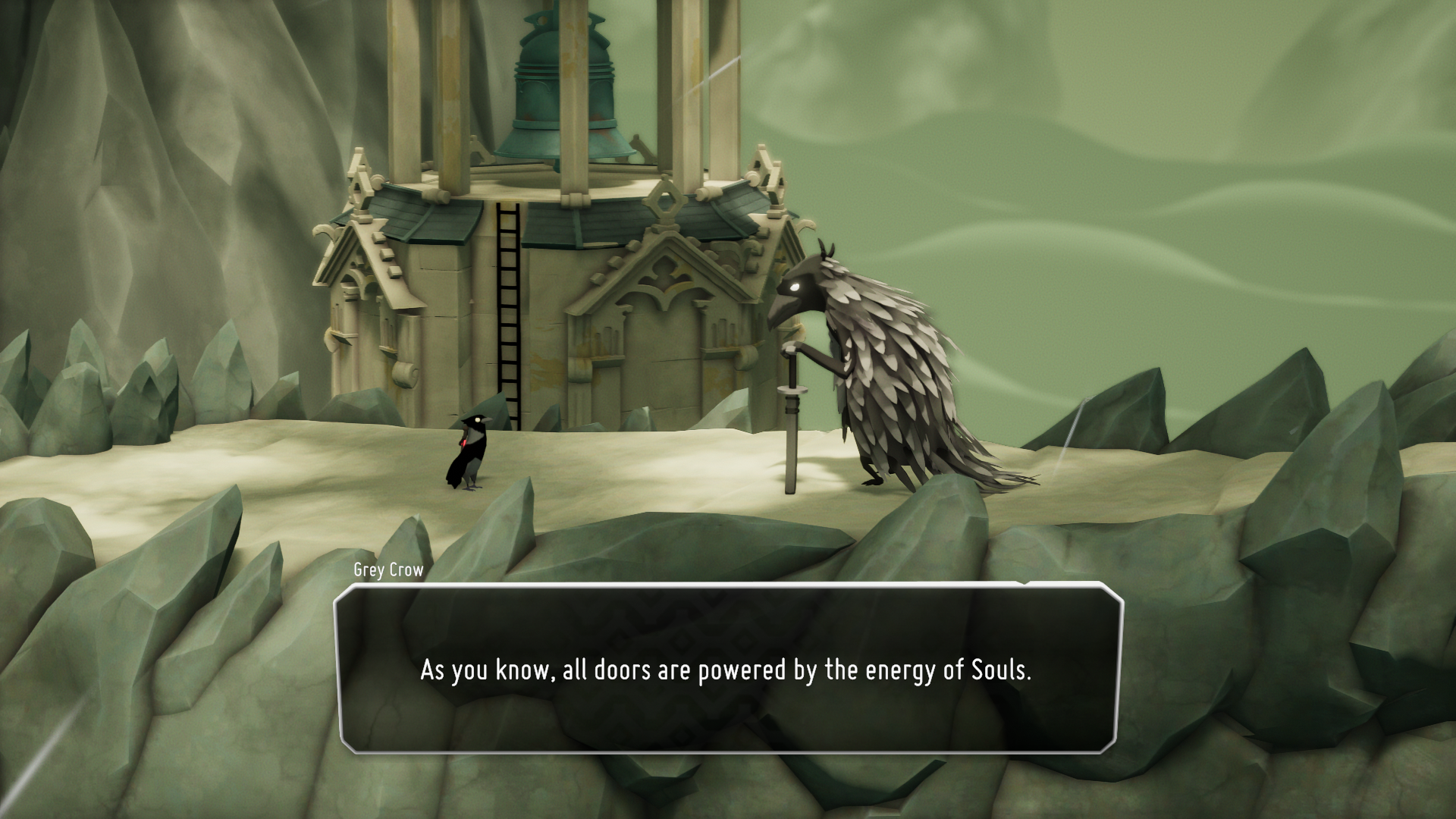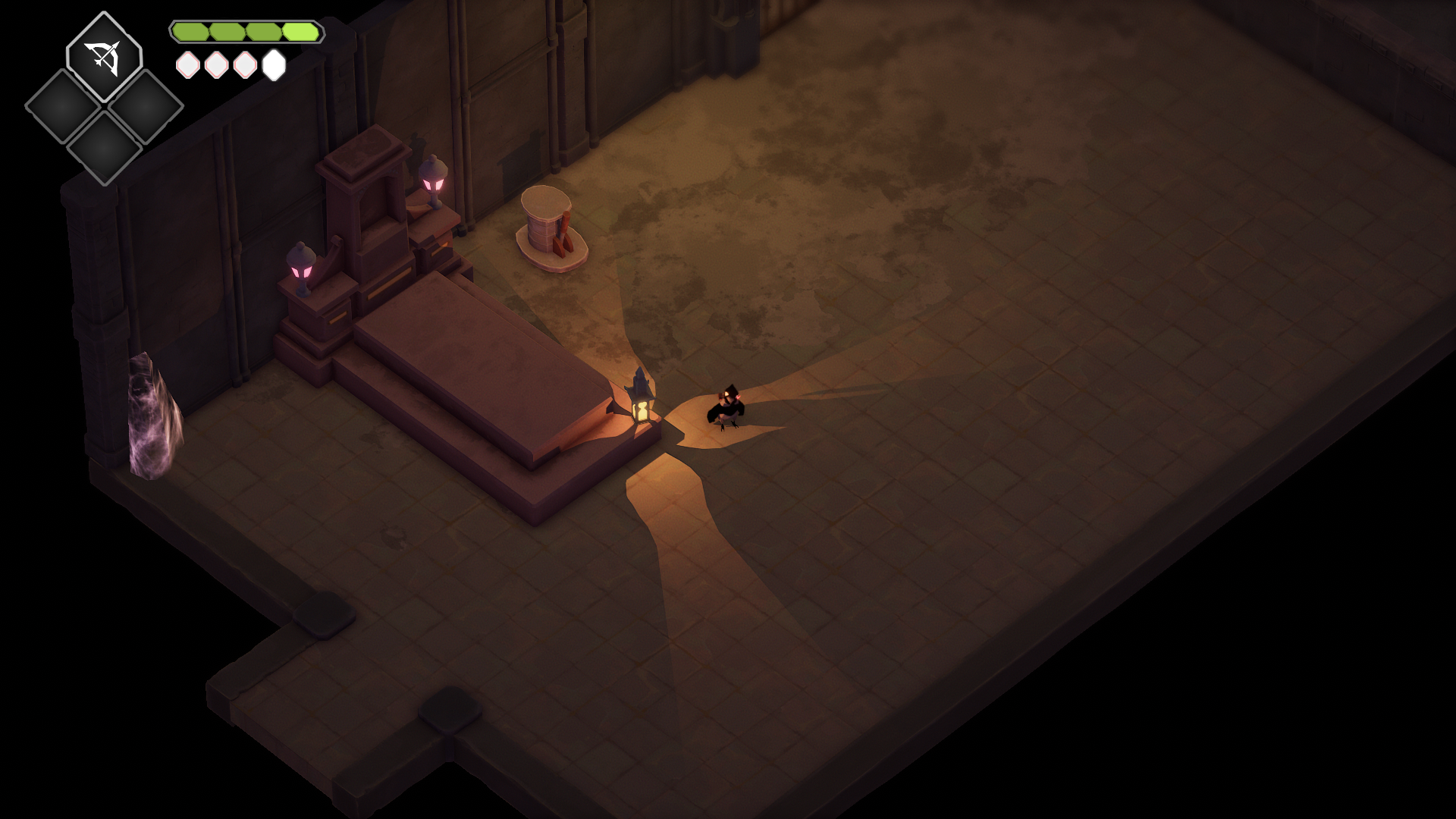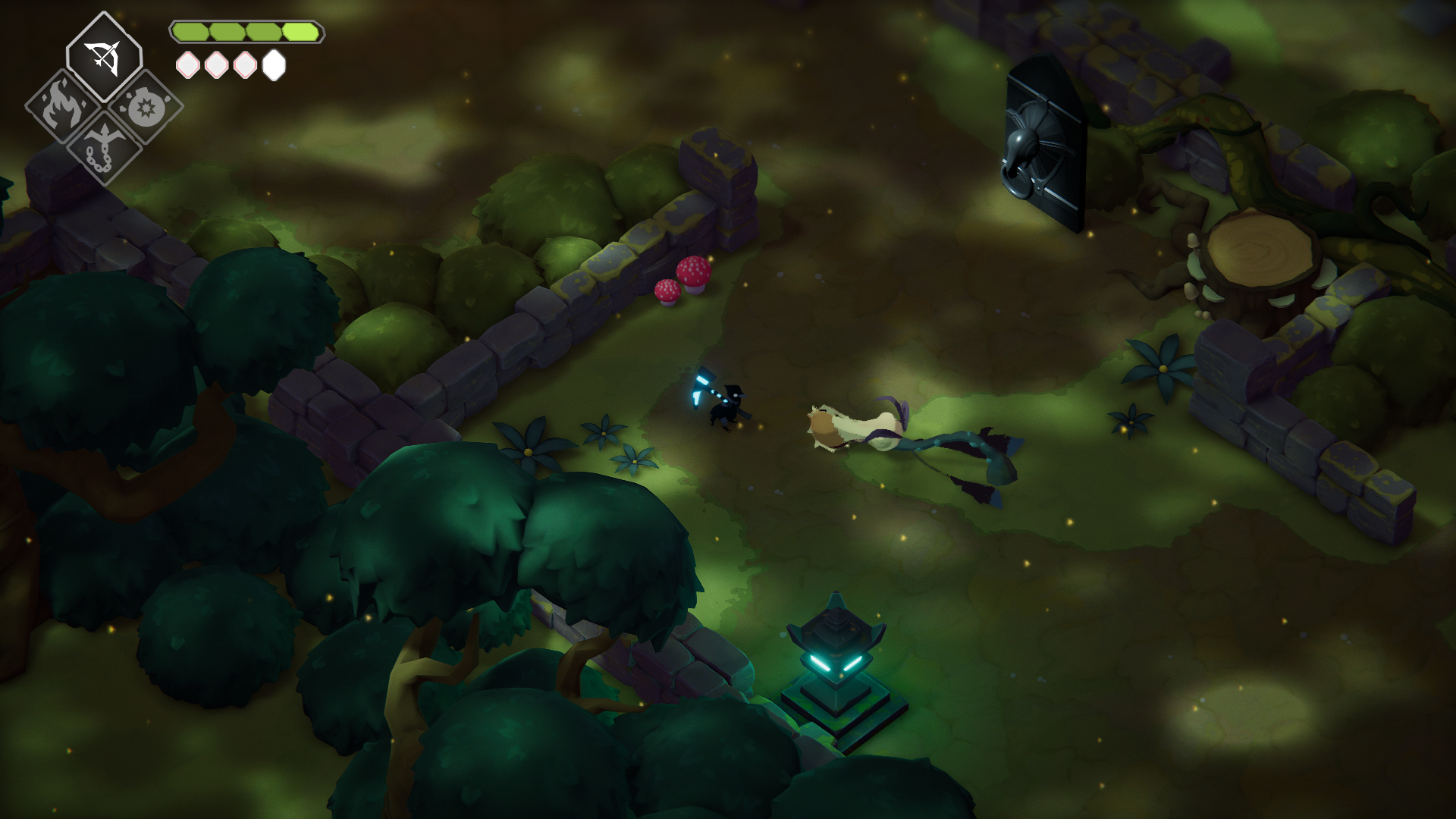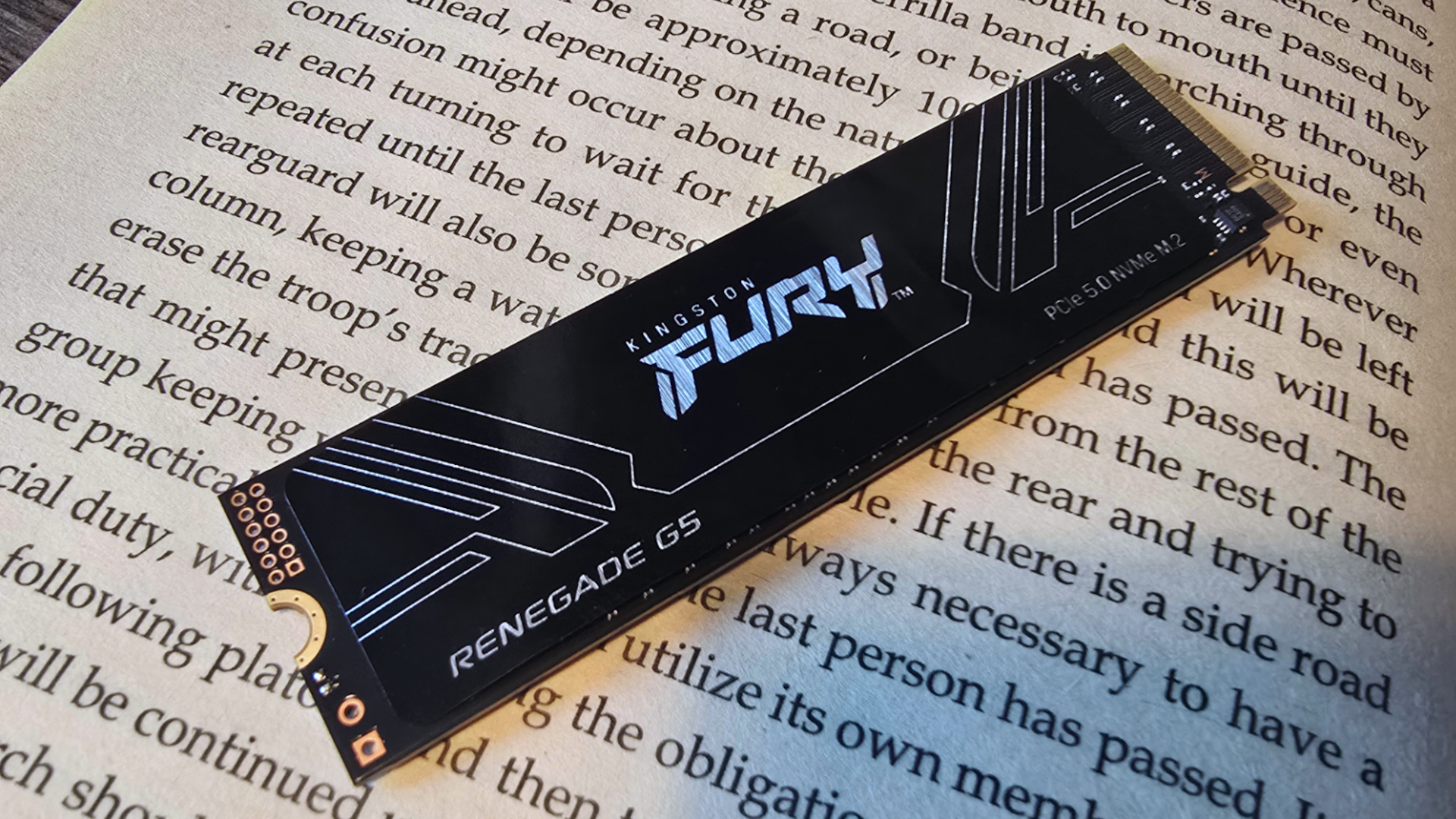Our Verdict
Death's Door boils modern action-adventure game design down to its fundamentals, and the reduction is excellent.
PC Gamer's got your back
What is it? A top-down Zelda-ish adventure with a unique cockeyed perspective.
Expect to pay: $20/£16.79
Developer: Acid Nerve
Publisher: Devolver Digital
Reviewed on: Windows 10, GeForce GTX 1070, Intel Core i7-9700 CPU, 16GB RAM
Multiplayer: No
Link: Official site
Think of Death's Door like a loving parody of the greater Dark Souls universe. All the trappings are there: the stony grey ruins of a dying realm, the wandering eccentrics with scene-setting dialogue, the gothic typeface whenever you encounter a boss lingering in their keep. It's grim as hell, but also, kinda funny. A looming overlord keeps a novelty mug on his desk, and the afterlife is recast as a pencil-pushing bureaucracy, with a professional class of various grim reapers complaining about the drudgery of work. Venture to the sanctum of the first boss and you'll find not a dragon or an undead monstrosity, but a very angry grandmother. There's a low-stakes breeziness to Death's Door that I came to admire over its 10 hours. At every turn, two-person studio Acid Nerve finds the sweet spot.
Death's Door is built like an old-school Zelda game: Players take control of a diminutive crow in a diorama-like world, and, outfitted with a sword and a dream, traipse through three dungeons to secure the macguffins necessary to pry open the titular gateway. In each of those levels, the player will stumble into an extra equippable weapon that assists in solving the puzzles found within the labyrinth.
It's all very standard stuff, predictable in the way that great action-adventures always are. I knew without question that a hookshot would materialize after seeing all of the wooden stakes conspicuously smattered across unreachable platforms, just as I knew that all of those crumbled patches in the walls would soon give way to an infinite supply of bombs. If you grew up on these games, you'll likely be able to play Death's Door through your limbic instincts.
There's real magic to be found when a game is only as long as it needs to be to get to the point.
So, you clear out those catacombs, kill their corresponding bosses, and blast through a brief grand finale. If that seems slight, you'd be correct! There are only four Zelda-ish weapons to collect, and they are each mapped directly to the D-pad as soon as they're picked up. The hub world is blessed with a merchant who offers some extremely light RPG character building options. Basically, the player cashes in all of the… well, all of the souls they accumulate from slaying enemies in order to beef up their attack power, dodge speed, or ranged aptitude. The dungeons themselves feel slightly longer than the classic top-down spelunkings of yore, but not by much.
I spent much of my time with Death's Door expecting a surprise third act, where the power-brokers ask for a few more tokens strewn about the ends of the earth before they'd allow me to see the credits. But no, Acid Nerve resists the pressure to pad it out. What you see is what you get.
And honestly, after the morass of 150-hour Assassin's Creed games, and the escalating boss-bloat from the FromSoftware acolytes, I relished Death's Door's simplicity. It strips back the action-adventure genre to its base foundations. You never need to do any intensive reading here; every roadblock can be solved through either logical deduction or pattern memorization. It doesn't ask you to master the bespoke animations of a dozen different swords and bludgeons, nor will you be required to seek out mysterious portals and their keys to pry into each zone (a la Dark Souls' Painted World of Ariamis). The music centers around a gorgeous piano refrain that grows hypnotic the deeper you submerge into Death's Door's rhythm. There's real magic to be found when a game is only as long as it needs to be to get to the point.
Death's Door can be a difficult game, and some of its later sections throw whole armies in your little crow's path. But attacks and evasions can be chained together fluidly, and none of my many restarts felt particularly cheap. It wouldn't have hurt if there were a few more flourishes on top of the standard roll-and-slash combat, but the system works. In fact, I was almost surprised by how violent Death's Door could be. Acid Nerve lays on the controller shake every time steel connects with flesh, and the cretins ragdoll to the ground like pro wrestlers. Nobody has the privilege to die in a puff of smoke.
Keep up to date with the most important stories and the best deals, as picked by the PC Gamer team.
That sublimity is only disrupted by a few problem spots. Death's Door doesn't quite match the immaculate level-design guarded by the Nintendo braintrust, which meant that I spent a couple parts retreading through the corridors over and over again trying to track down the last key to unlock the next encounter or whatever. This is one of the ancient miseries associated with the genre, and for a game that specializes in efficiency, too much backtracking can really take the air out of the ball. (To make matters worse, there's no map to be found in any of the dungeons.) Death's Door is judicious with its checkpoints—fine by me—but there's also nothing stopping you from bolting past all the enemies you've dispatched in previous runs, which makes the corpserun a little pointless. Either punish me with a grind, or respawn me in the same place I died! I promise you, I can take it.
Otherwise, though, Death's Door feels like a microscopic epic. It's as if a grand entry to an overarching canon—filled with quirks, humor, and wondrous attention to detail—was miraculously miniaturized to fit into a fortnight's worth of lunch breaks. Maybe the great sagas of videogames don't need to be strewn out over gargantuan level caps and supersized open worlds. Maybe all it takes is a transcendent vibe.
Death's Door boils modern action-adventure game design down to its fundamentals, and the reduction is excellent.

Luke Winkie is a freelance journalist and contributor to many publications, including PC Gamer, The New York Times, Gawker, Slate, and Mel Magazine. In between bouts of writing about Hearthstone, World of Warcraft and Twitch culture here on PC Gamer, Luke also publishes the newsletter On Posting. As a self-described "chronic poster," Luke has "spent hours deep-scrolling through surreptitious Likes tabs to uncover the root of intra-publication beef and broken down quote-tweet animosity like it’s Super Bowl tape." When he graduated from journalism school, he had no idea how bad it was going to get.
